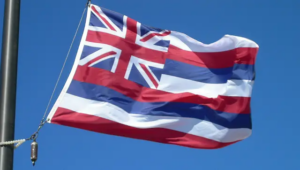By Gerald L. Maatman, Jr. and Nathan K. Norimoto
Duane Morris Synopsis: In Genesis B., et al. v U.S. Environmental Protection Agency, et al., Case No. 2:23-CV-10345 (C.D. Cal. Feb. 11, 2025), Judge Michael Fitzgerald of the U.S. District Court for the Central District of California dismissed, without leave to amend, a putative class action for lack of standing due to a lack of traceability between plaintiffs’ alleged injury and challenged policies promulgated by defendants, the United States Environmental Protection Agency (“EPA”) and the Office of Management and Budget (“OMB”). The ruling is an important reminder on the importance of standing in class action litigation.
Case Background
Plaintiffs, a group of children living in California, filed a putative class action seeking declaratory relief premised on alleged violations of the Equal Protection Clause of the Fifth Amendment, the Due Process Clause of the Fifth Amendment, and the Take Care Clause of Article II of the U.S. Constitution. (Order Granting Motion to Dismiss Complaint (ECF No. 50.) at 1-2.) Plaintiffs allege they were “harmed by climate change due to increased pollution and emissions, rising temperatures, extreme weather patterns, and wildfire exposure.” Id. at 2.
Plaintiffs challenge Circular Order No. A-4, a “guidance document” issued by the OMB that “sets forth the Executive Branch policy on benefit-cost analysis” (“BCA”). Id. at 2. In accordance with Circular Order No. A-4, the EPA issued, “Guidelines for Preparing Economic Analyses” (the “EPA Guidelines”), that set forth the EPA’s “policy on performing BCA and other economic analyses of contemplated regulations in accordance with Circular Order No. A-4.” Id. Plaintiffs allege that, based on the EPA Guidelines, the EPA issued Regulatory Impact Analyses that “anticipate[ ] and evaluate[ ] the likely consequences of its regulatory actions allowing climate pollutions.” Id. These various policies, according to Plaintiffs, “require” the EPA to apply “discount rates” that “put their thumb on the scale against urgent and ambitious regulatory programs to reduce climate pollution, and in favor of taking less ambitious actions in the present.” Id. at 3.
Defendants, the EPA, Michael Regan, “in his official capacity as Administrator of the EPA,” the OMB, and Shalanda Young, “in her official capacity as Director of OMB” (together, “Defendants”), moved to dismiss the operative complaint pursuant to Rules 12(b)(1) and 12(b)(6) of the Federal Rules of Civil Procedure for lack of subject-matter jurisdiction and failure to state a claim, respectively. Id. at 6. The Court granted Defendants’ motion to dismiss, without leave to amend, dismissing the complaint for lack of subject-matter jurisdiction finding that Plaintiffs lacked standing to pursue their complaint as the purported injuries were not “fairly traceable” to Defendants’ policies. Id. at 7.
Court’s Decision
The Court analyzed two theories of harm advanced by Plaintiffs, including: (1) “environmental harms” that Defendants’ policies allegedly “result in the under-regulations of greenhouse gas emissions, which burdens Plaintiffs by disrupting, inter alia, their education, recreation, and religious expression;” and (2) “harms from discrimination” because Defendants’ policies allegedly “[deny them] equal treatment under law.” Id.
First, the Court held that Plaintiffs lacked standing because they failed to demonstrate the alleged “environmental harms” were “fairly traceable” to any of the alleged “discriminatory” policies. Id. at 8. Critically, the Court reasoned that “Plaintiffs fail to allege that Circular No. A-4 or the EPA Guidelines set out binding discount rates or practices.” Id. (emphasis added). The Court noted that the OMB’s policies should be interpreted as “guidance documents” and that BCAs are “context-specific in nature, and [do] not mandate a particular [discount] rate.” Id. Thus, the EPA “may or may not” use discounting, and even it does apply discounting, it “is only a single guiding factor when used” in any promulgated policies. Id. Since Plaintiffs “theory of harm therefore bundles uncertainty on uncertainty,” the Court concluded that Plaintiffs failed to “demonstrate traceability as to their environmental harms.” Id.
The Court rejected Plaintiffs attempt to distinguish decisions from the Eighth and Fifth Circuits, finding that those courts’ reliance on a “draft update to Circular No. A-4” was immaterial to the decisions. Id. at 9. The Court also rejected Plaintiffs’ argument that it was premature to consider whether Defendants’ policies were “binding” at the responsive pleading stage of the litigation. Id. at 9-10.
Second, the Court held that Plaintiffs failed to establish they “suffered an injury-in-fact” that is traceable to the alleged discrimination caused by Defendants’ policies. Id. at 12. The Court noted that, “to find that there is traceability as to the alleged facial discrimination, the Court must find that unequal treatment under the law occurred.” Id. Here, the complaint failed to identify any “individual” harms suffered by Plaintiffs, and instead “anticipate[s] societal harms and benefits” that “will be experienced relatively equally by all people — both in the United States and around the world — who are alive at the time of their impacts.” Id. As such, the alleged harm “does not derive from any of the children in the [Defendants’ policies], but on the allegation that the [Defendants’ policies] result in a suboptimal rate of greenhouse gas emissions in the future, which will disproportionately impact present-day children.” Id. As an example, the Court noted the complaint fails to answer how the policies “work a discriminatory harm against an individual aged 17 years and 364 days and not an individual aged 18 years.” Id. Thus, the Court determined that Plaintiffs claims failed because they are “not about a stigmatic injury at all, but rather a displeasure with the EPA’s economic analyses in assessing the impacts of future harms.” Id. at 14.
Finally, the Court granted Defendants’ motion without leave to amend because, “no matter how many opportunities for amendment Plaintiffs receive, they cannot overcome the structural lack of injury-in-fact and traceability as to their claims.” Id. at 16. Since Defendants’ policies “do not prescribe a discount rate that the EPA must use and because Plaintiffs challenge no specific policies,” the Court found it “difficult to imagine how Plaintiffs could ever sufficiently allege standing on” the facts set forth in the complaint. Id.
Implications For Companies
Standing can be an effective tool to challenge putative class action complaints at the responsive pleading stage of the litigation. Although a court may be hesitant to dismiss a complaint without leave to amend, the G.B. decision underscores how effective challenging standing can be to secure a dismissal in the employer’s favor at the outset of the litigation.




